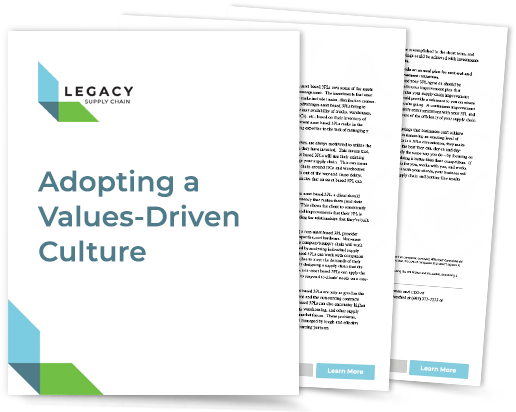Sustainability Part 1- Going Green in the Supply Chain

There seems to still be a strong commitment to sustainability initiatives despite the global recession. A critical part of building a truly sustainable supply chain is maintaining environmentally sound standards. Although many companies have embraced the idea of incorporating greener business processes, many are still in the dark as to what a green supply chain really means.
First, a few common green tactics we are all familiar with:
- technology allows us to perform business transactions electronically, cutting out the flow of paper used in transactions, also fuel required to transport paper documents is reduced
- windmills and solar energy at distribution facilities for electric power generation
- telecommuting has reduced the impact of green house gas emissions by reducing automobile trips
- reverse logistics programs promote recycling, reusing and salvaging products and materials
- enhanced standards placed on sourcing and manufacturing parties helps reduce harmful materials use
- replacement of server and computer functions with cloud-based third party solution options
We have read many articles written about CEOs from our nation’s top companies that stand by their efforts proclaiming that an environmentally sustainable company can yield reduced operating expenses, positive impacts on employees, and substantial savings in fuel costs in addition to the environmental benefits. In general, we feel it is important to identify ways to support the logistics industry toward greater sustainability, in anticipation that it will be a major area of focus for customers in the future.
As a 3PL provider, how do we determine our capacity for change and what is the value to the industry? More importantly, how do we shape and measure our efforts and make sure that we are still able to provide our core value proposition- streamlining the supply chain by saving time and money?
Oscar Wilde said, “Nowadays people know the cost of everything and the value of nothing.” The concept of value has shifted throughout history. Growing the effort to become a more sustainable 3PL does not come without challenges. The ability to balance efforts with customer expectations for low priced services is of course a major concern. It would also be imperative to identify and establish sustainable priorities within the company while developing an organizational sensitivity to sustainability issues. These processes take time and support from everyone involved.
Regulatory mandates by the government will surely play a role as well. The cost of not being proactive in maintaining green practices and waiting until they become law is immeasurable. Waiting past that point until violations and fines begin occurring should simply not be a practice of a responsible and environmentally sustainable company.
LEGACY Supply Chain Services has taken a more sustainable and green-aware business practice through paperless file management and the installation of energy-efficient T5 lighting in many distribution centers. Most of the transportation providers we partner with use fuel-efficient and clean emissions equipment. We consolidate shipments to optimize our clients’ freight spend; the side effect being less fuel consumption. This is just the beginning, and we are continually looking for ways to improve upon our processes to create sustainable and efficient operations for our clients and our people.
Through education and awareness we can work to build momentum in support of sustainability. Measuring corporate sustainability is gaining a great deal of attention. There are several organizations dedicated to the development and education of businesses regarding sustainability practices, metrics, and compliance. Several conferences and training programs are available nationwide as well.
Minimizing our carbon footprint is not just about global climate change anymore. Becoming “green” is one of the great influences that we have as a logistics provider. Our support in this global sustainability initiative is a privilege and responsibility, and we encourage others out there to begin taking steps to help make an impact.
The consequences of procrastination are far too great to ignore. When faced with immense challenges, such as those related to sustainability, the temptation is often to maintain the status quo. With increased awareness, it raises another question: Do 3PL providers have the capacity for change? We feel that we do, and trust that others will as well…
(Being green is just one aspect of maintaining a truly sustainable company. Stay tuned for parts 2 & 3 of our sustainability awareness blog series.) We also like this article (even though it isn’t free)- here is a link to further information on sustainable supply chain management.
We would like to hear about how your company is engaging in green practices. Please feel free to comment below.
Get Insights. Stay Ahead.
Get the latest news and insights via email on warehouse improvement, transportation optimization, labor strikes and international shipping rate changes.Popular Posts
Search Posts
-
2024 Q1 Freight Landscape: Trends, Challenges, and Predictions
As the first quarter of 2024 comes to an end, here are some observations over the past few months as well as predictions about the trucking...
+ Read more -
Baltimore Bridge Impact Assessment – Update
Following the recent Baltimore Bridge collapse and subsequent port closures, we want to keep our customers informed about the situation and...
+ Read more -
Global Momentum Builds for Charge on Global Shipping Sector’s CO2 Emissions
A growing coalition of 47 countries, including key players like the European Union, Canada, Japan, and various Pacific Island nations, is...
+ Read more










